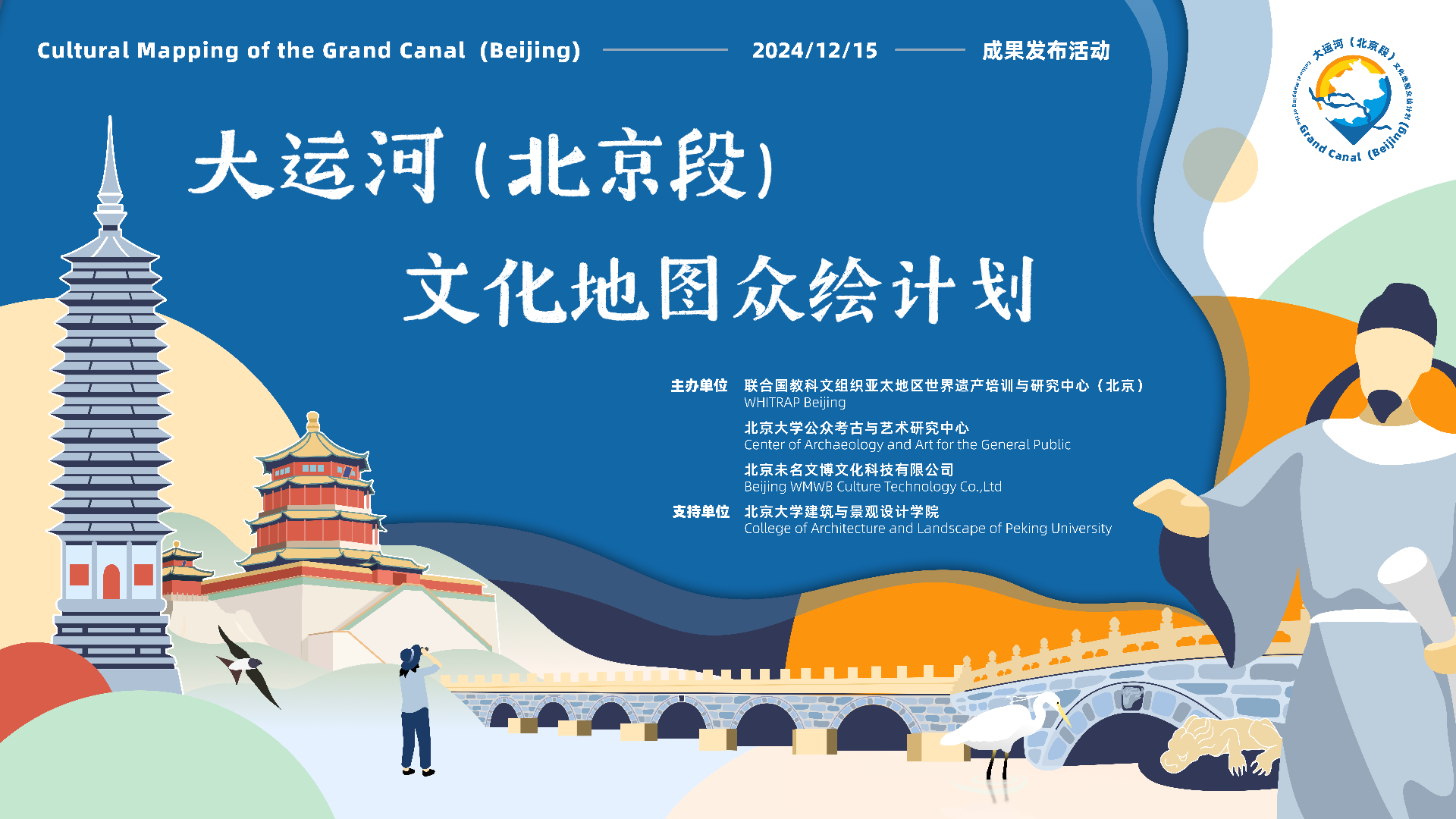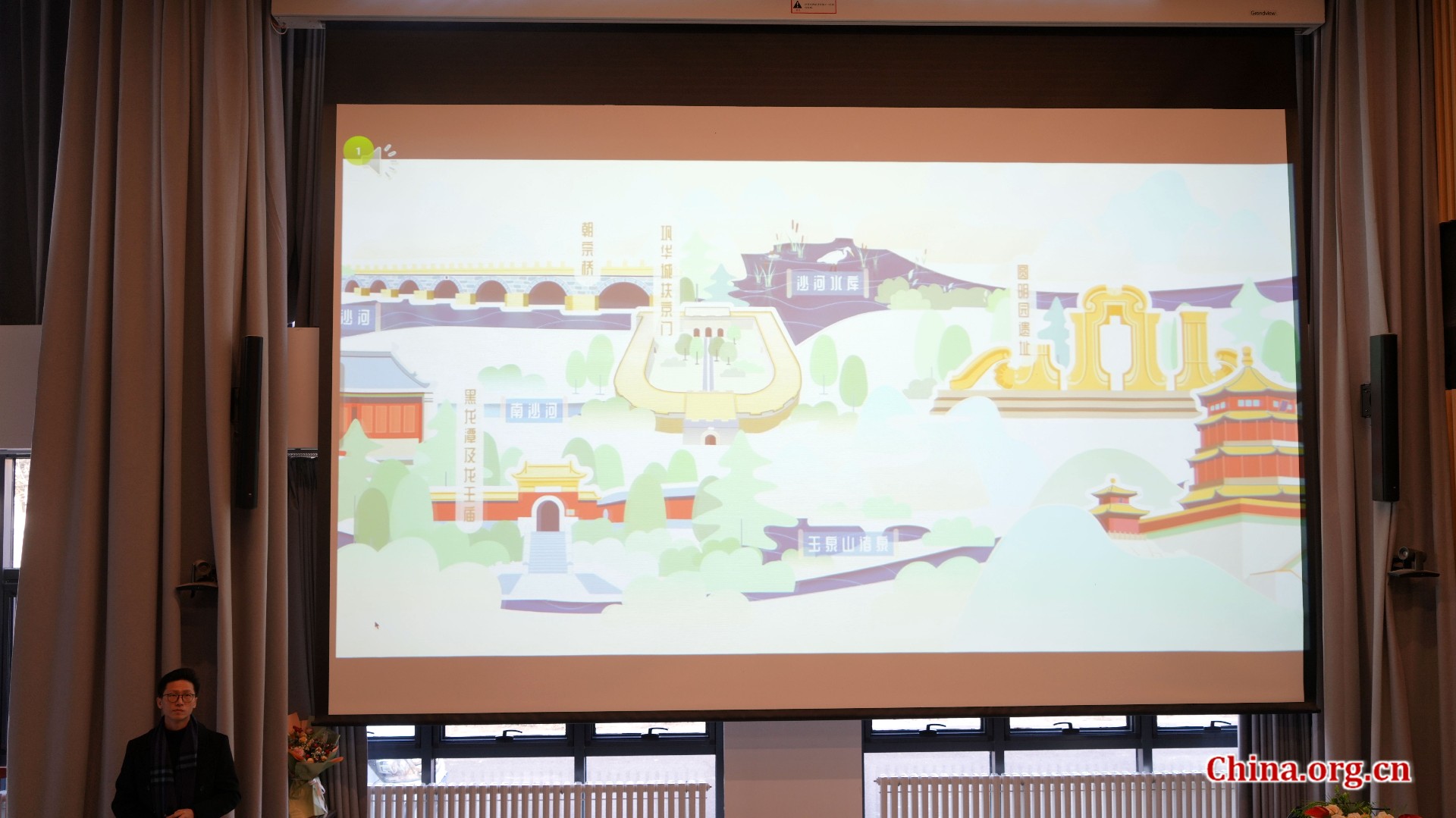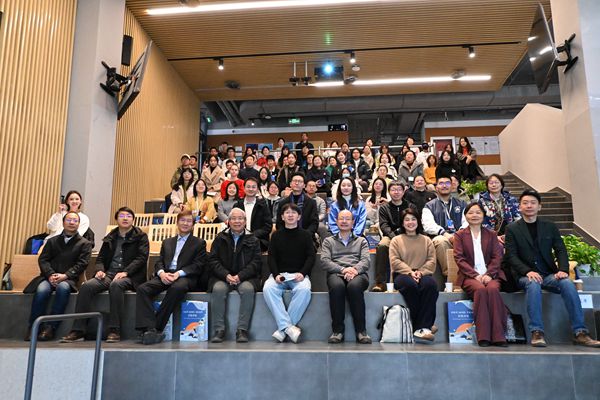Grand Canal Cultural Mapping Project Concludes in Beijing

A poster for the Cultural Mapping of the Grand Canal (Beijing) project. [Photo provided to China.org.cn]
The results of a community project aimed at documenting and preserving the cultural heritage of the Beijing section of the Grand Canal were officially unveiled at the College of Architecture and Landscape of Peking University in Beijing on Dec. 15.
The project, which began in August 2023, brought together over 100 volunteers and more than 10 expert advisors to jointly record and showcase the rich historical and cultural legacy of the Grand Canal. The Grand Canal is a vast waterway system running from Zhejiang province in the south to Beijing in the north. As the terminus of this historic waterway, Beijing is home to numerous culturally and historically significant sections of the canal. Over centuries, it has played a pivotal role in facilitating trade and fostering cultural exchanges between northern and southern China.
After more than a year of research and collaboration, the project participants surveyed and mapped cultural resources in seven districts across Beijing, gathering data on 402 cultural sites, producing 25 short videos, and creating five regional hand-drawn-style cultural maps, along with a comprehensive cultural scroll detailing the Beijing section of the Grand Canal. The project was initiated by the World Heritage Institute of Training and Research for the Asia and the Pacific Region under the auspices of UNESCO Beijing (WHITRAP Beijing), Peking University's Center of Archaeology and Art for the General Public, and Beijing WMWB Cultural Technology Co., Ltd.
Zhang Jianwei, a researcher at Peking University's School of Archaeology and Museology and one of the co-initiators of the project, emphasized the importance of public engagement in the project. He noted that the core value of the initiative lies in its ability to encourage widespread participation in the preservation of cultural heritage. Zhang explained that the unveiling of the results marked a beginning, adding that with a vision for the future in which this sustainable and efficient model is widely adopted, the project will allow people to collectively safeguard and revitalize our cultural heritage for future generations.
The project has addressed gaps in the field of Grand Canal research, said Li Dihua, associate professor at Peking University and deputy director of WHITRAP Beijing. He emphasized the value of including the daily lives of residents living along the canal in the studies. Li expressed his hopes that the model could be extended to other sections of the Grand Canal in the future, advancing both academic research and the promotion of canal culture.
Shao Yong, secretary general of WHITRAP, commended the innovative approach of the project and praised the dedication of the volunteers. She emphasized the initiative's importance in raising awareness among young people and encouraging public participation in cultural heritage preservation. Shao also encouraged further community involvement, urging that this enthusiasm be transformed into tangible actions to protect the Grand Canal and other cultural heritage sites.

Zhang Jianshuo, co-initiator of the Cultural Mapping of the Grand Canal (Beijing) project, presents the key outcomes of the project at Peking University, Beijing, Dec. 15, 2024. [Photo by Wang Yiming/China.org.cn]
Zhang Jianshuo, co-initiator of the project and a member of the Cultural Landscape Committee of the International Council on Monuments and Sites (China), provided a comprehensive overview of the project's origins, milestones and key outcomes.
He introduced international outreach efforts, as well as collaborations with local schools. Beijing No. 4 High School International Campus, for instance, launched a cultural heritage course and organized students to plan exhibitions about the Grand Canal. In addition, grade nine students of Beijing No. 1 Experimental School were involved in creating the youth editions of the Grand Canal cultural maps.
Liu Qing, a designer at Beijing WMWB Cultural Technology and creator of the cultural map, shared insights into the design process and collaborative approach to the mapping effort. She outlined the criteria for selecting key cultural sites and explained how the project fostered collective creation through volunteer participation. In 2024, the project expanded to include international collaboration with students and faculty from the Saint Petersburg State University of Architecture and Civil Engineering in Russia.
Professor Maria Riadova, representing the Russian team, shared their invaluable experiences in preserving the Historic Centre of Saint Petersburg and Related Groups of Monuments, a UNESCO World Heritage site. The team produced engaging short films that delve into the intricacies of safeguarding movable cultural heritage, underscoring the significance of hands-on learning in fostering a deep appreciation for cultural heritage. This collaboration has not only facilitated cultural exchange between Chinese and Russian students, but has also ignited a passion and sense of responsibility among young people to actively participate in preserving shared cultural heritage, the professor said in a video message at the event.
Following the presentations, an open discussion ensued, where attendees, industry partners and volunteers shared their insights and experiences.

Participants in the Cultural Mapping of the Grand Canal (Beijing) project pose for a group photo at the results release event at Peking University, Beijing, Dec. 15, 2024. [Photo provided to China.org.cn]
The results release event was jointly organized by WHITRAP Beijing, Peking University's Center of Archaeology and Art for the General Public, and Beijing WMWB Cultural Technology Co., Ltd., with support from the College of Architecture and Landscape of Peking University.